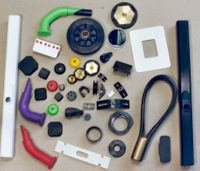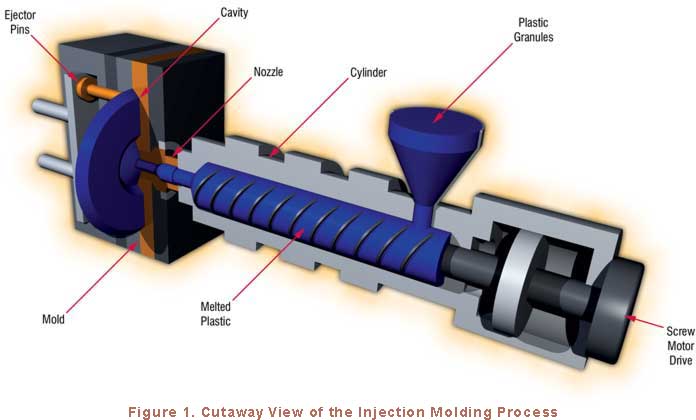Injection molding
From DDL Wiki
Injection Molding
1. Definition
What & How:
Injection Molding is a manufacturing process commonly used in creating plastic components. In brief this process involves injecting liquid plastic into a two piece mold. This plastic is allowed to cool within the mold and then
Many things are made using injection molding
Process
Steps of Injection molding: There are several stages that make up a typical injection molding system.
1. The hopper -
The plastic enters the machine as either plastic beads or some other form of plastic granule. This is stored into the hopper until it is needed.
2. Injection Barrel-
Typically the hopper feeds into the injection barrel by way of gravity. The injection barrel is heated in order to begin melting the plastic on its way to be injected. Any color is typically added to the plastic at this stage.
3.The Injector -
The plastic is driven through the barrel through one of two different means. Either a reciprocating screw drives the plastic forward into the injector, or there is a hydralic ram. With current technologies the reciprocating screw drive has a much higher precision for injection and is used more frequently, especially with smaller components.
4. The Mold -
The mold is the component that contains an empty volume (cavity) in the negative shape of the object desired. This is where the plastic is injected to recieve it's permanent shape. Typically the mold is cooled so that the plastic hardens evenly and quickly. The mold contains two parts which seperate to allow the part to be retrieved after the process is done.
5. Ejector Pin -
Some components do not simply fall out of the mold when completed so an additional ejector pin is added in these cases to knock the part out of the mold
A diagram of injection molding


